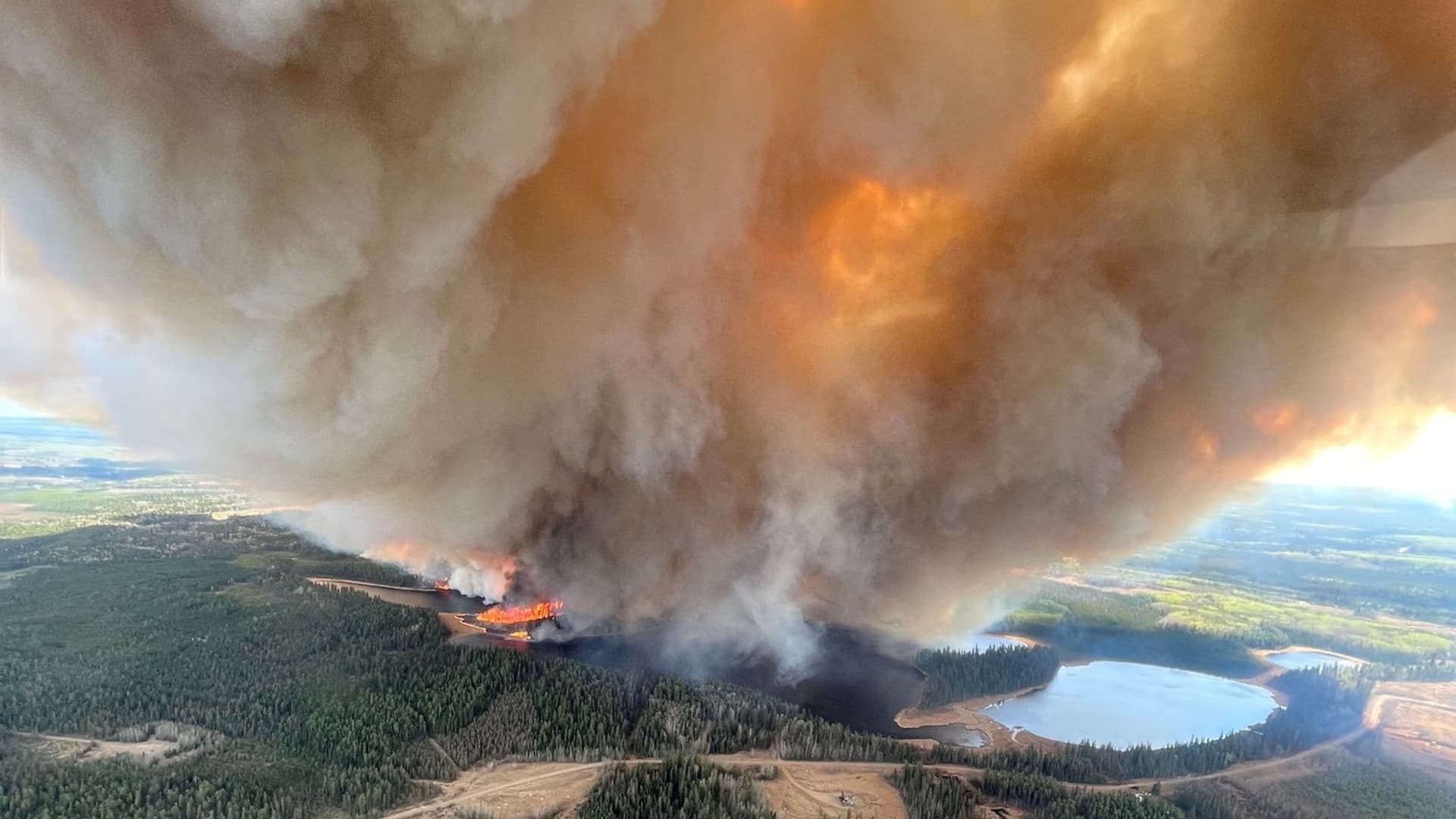Wildfires burn millions of acres in Canada, send oil prices higher

There were nearly 90 fires burning in the province of Alberta, a quarter of which are expected to get larger, according to the Canadian Wildland Fire Information System. More than 20,000 people have had to evacuate their homes.
The fires have had a notable impact on the region’s oil industry, as some drillers were forced to halt a small percentage of production in a precautionary measure due to shifting fire conditions. This week, benchmark Canadian heavy crude prices tightened to multi-month highs over concerns about the blazes.
Nearly 2.7 million barrels of daily oil sands production in Alberta is in “very high” or “extreme” wildfire danger zones, according to Rystad Energy, an energy consulting firm.
A smoke column rises from wildfire EWF-035 near Shining Bank, Alberta, Canada May 5, 2023.
Alberta Wildfire | Reuters
As of Monday, outage volumes stood at about 240,000 barrels of oil equivalent per day. However, the ultimate damage to production will likely exceed that number, Thomas Liles, vice president of Rystad Energy’s upstream research, wrote in a market update.
The smoke also has caused poor air quality and hazy skies in parts of southern Canada, as well as in North Dakota, Minnesota and several other states. The spread of the smoke, which contains particles called aerosols, has prompted concerns over the impact of poor air quality on respiratory and cardiovascular health.
The air quality levels in several cities in Alberta this week have been ranked as “very high risk” by Canada’s Air Quality Health Index, the highest-ranking category determining health risk. Wildfire smoke is forecast to linger and potentially increase over the coming week.
Property owner Adam Norris surveys the damage at his home in Drayton Valley, Alberta, Canada, on May 8, 2023.
Walter Tychnowicz | AFP | Getty Images
The BC Wildfire Service said the arrival of sustained winds from the north has caused “aggressive fire behavior on all wildfires” in Canada’s Peace Region, which is located in the northeast of British Columbia between the Rocky Mountain Foothills and the Alberta Plains.
“We are in unprecedented drought conditions,” said Scott Rennick, the incident commander at the North Peace Complex, who noted that aggressive fire behavior is occurring amid higher-than-average temperatures.
Climate change is increasing the frequency and intensity of wildfires in western Canada and prompting longer seasons. Rising temperatures, prolonged periods of drought and shifts in precipitation patterns make the region more vulnerable to fires that ignite and spread quickly.
The Canadian military and firefighters from Canada and the U.S. are working to combat the blazes, but changes in wind direction that switch the path of the blazes could create problems for responders.
Wildfire smoke is typically common during late summer and early fall around the peak of the annual wildfire season, which runs from March 1 to Oct. 31. But this month has seen seasonal heat records in several parts of Alberta, according to Environment and Climate Change Canada.
This image, from the Geostationary Operational Environmental Satellite 18 (GOES-18), shows smoke from the fires sweeping over southern Canada as well as North Dakota, Minnesota, and several other states on May 15, 2023.